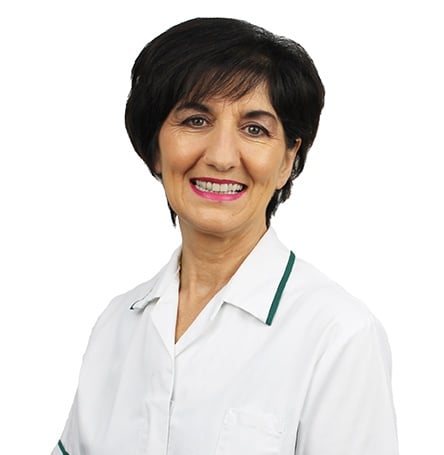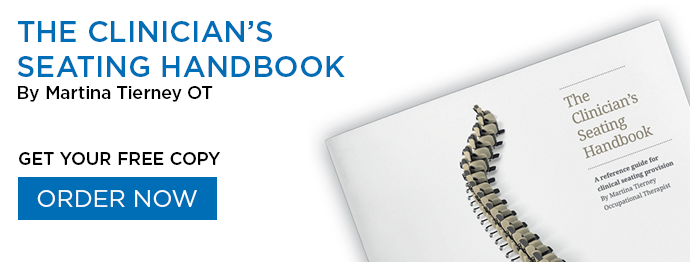What is good research? (First published in the OT News Magazine, 2013).
Like many other clinical OTs, in my early career I had limited knowledge on how effective research was carried out or how to differentiate between good and not so good research. I worked in many different environments, from stroke and community to rehab and acute care and would often have manufacturers presenting products to me, which purportedly had “research” carried out on them.
The emphasis throughout healthcare for an evidence-based approach to clinical practice is now a real expectation. OT practice should be underpinned by sound evidence in order to ensure that the interventions used are the most effective. Research evidence can inform decisions on which is the most effective tool or rehabilitation programme to use thereby impacting on the patient’s care and prognosis. It is becoming more important than ever with such pressure on our limited healthcare budget that our interventions are backed by good quality research.
As clinicians it is essential that you have the knowledge to critically review research and to determine what good research is. Many therapists have found that learning this skill is not as overwhelming as they first thought. I recently published ‘The Clinician’s Seating Handbook’ to assist therapists with making informed decisions, backed by research. I am also working to publish more such reference books to fill voids in the knowledge available to therapists on the ground.
Doing proper research is a time consuming, complex and costly process and because of this, is not carried out at all by many manufacturers. In some cases, anecdotal evidence is portrayed and advertised as “research” but contains no real data or sound clinical trials and dangerously lacks independent and ethical rigour.
There is a major difference between clinical research and a mere product trial. There are also important differences between laboratory-based research and more real-life field research. As decision makers on behalf of our patients, it is important to be able to recognise and understand the difference.
Partnerships with universities are essential to protect a research project and ensure rigour and objectivity of the work. One of the most time consuming and rigorous parts of the process is gaining ethical approval. To protect our patients and to ensure the aims and procedures of a research project have a strong foundation in sound medical ethics, the National Research Ethics Service (NRES) or Office for Research Ethics Committee (OREC) procedures and requirements are, and should be, stringent.
When reading about research that has been conducted, it is important to consider if the following conditions have been included in the study. These factors are common to all good pieces of research involving social care service users, their families, carers and staff working in this area.
- There should be a clear statement of research aims, which defines the research question.
- There is an information sheet for participants, which sets out clearly what the research is about, what it will involve and consent is obtained in writing on a consent form prior to research beginning.
- The methodology is appropriate to the research question. For example, if the research is into people’s perceptions, a more qualitative, unstructured interview may be appropriate. If the research aims to identify the scale of a problem or need, a more quantitative, randomised, statistical sample survey may be more appropriate. Good research can often use a combination of methodologies, which complement one another.
- The research should be carried out in an unbiased fashion. As far as possible the researcher should not influence the results of the research in any way. If this is likely, it needs to be addressed explicitly and systematically.
- From the beginning, the research should have appropriate and sufficient resources in terms of people, time, transport, money etc. allocated to it.
- Knowledge around appropriate information gathering techniques.
- An understanding of research issues.
- An understanding of the research area.
- Those involved in designing, conducting, analysing and supervising the research should have a full understanding of the subject area.
- If applicable, the information generated from the research will inform the policy-making process.
- All research should be ethical and not harmful in any way to the participants.
The Seating Matters research project will:
- Explore the effectiveness of specialist seating provision within a nursing home environment and how it has the potential to impact positively on the health and wellbeing of residents and their caregivers.
- Identify the key principles of correct positioning, seating and mobility and the influence this can have on the health of older people and their risk of pressure ulcers.
- Identify the postural issues within seating evident in nursing homes.
- Understand the impact of a poor sitting posture for residents in nursing homes.
- Highlight the effect that sitting postures can have on the resident’s care giver.
- Identify the contribution of a seating assessment and provision of the prescribed seating equipment in reducing pressure ulcers.
There are two intervention arms used within this study using three nursing homes with similar nursing needs.
The Intervention Group will include 20 participants and will involve completion of a seating assessment before and after a 12 week trial period and the provision of a suitable seating system. The chair selected will be determined on postural ability and limitations of each participant. The range of chairs available offers the ability to cater for a vast range of client needs; from pelvic rotation and obliquity, limited hip flexion, tight hamstrings, scoliosis, and the opportunity to tilt to redistribute pressure over the ‘at-risk’ areas of pressure sores therefore meeting required postural needs over a 12 week period.
The Control group of the study and will be in the same nursing homes at the same time as the intervention group. 20 participants will take part in the control group and will receive a seating assessment before and after the 12 week trial period to record any changes if any, with regards posture, medical presentation and medication received. They will be assessed over the 12 week period in their existing chair.
Data Collection:
The following assessment tools will be administered at baseline and post intervention period:
- Demographics (such as age of client, medical history and functional skills).
- Seating assessment (Physical).
- Photographs (to be taken before and after initial assessment with residents sitting in original chair and in the chair provided following seating assessment. These will measure any postural changes).
- Braden assessment to identify the risk of developing pressure ulcers.
- Pulse Oximeter to measure saturated oxygen levels and rate of respiration and record if this changes throughout the trial period.
Proposed Study Gains:
There is not enough current research completed exploring the effectiveness of seating with persons with physical disabilities. It is also estimated that pressure ulcers cost billions to treat each year and that 95% of them are completely avoidable.
It is essential that this study is completed to identify the benefits of correct seating and positioning on the physical health and quality of life of this client group and for the care home staff. It is hypothesised that the study will show a reduced risk of pressure ulcer development in the intervention group.
This study will contribute to evidence base on the impact of personalised seating prescription and follow on provision of seating equipment for elders in nursing home.
Conclusion:
Good research leads to good patient care but we have to be careful and thorough about choosing the information that we use.
If you would like to know more about how to conduct, review or use proper research in your clinical practice, please feel free to contact me by email; martina@seatingmatters.com, I will be happy to discuss this with you.






